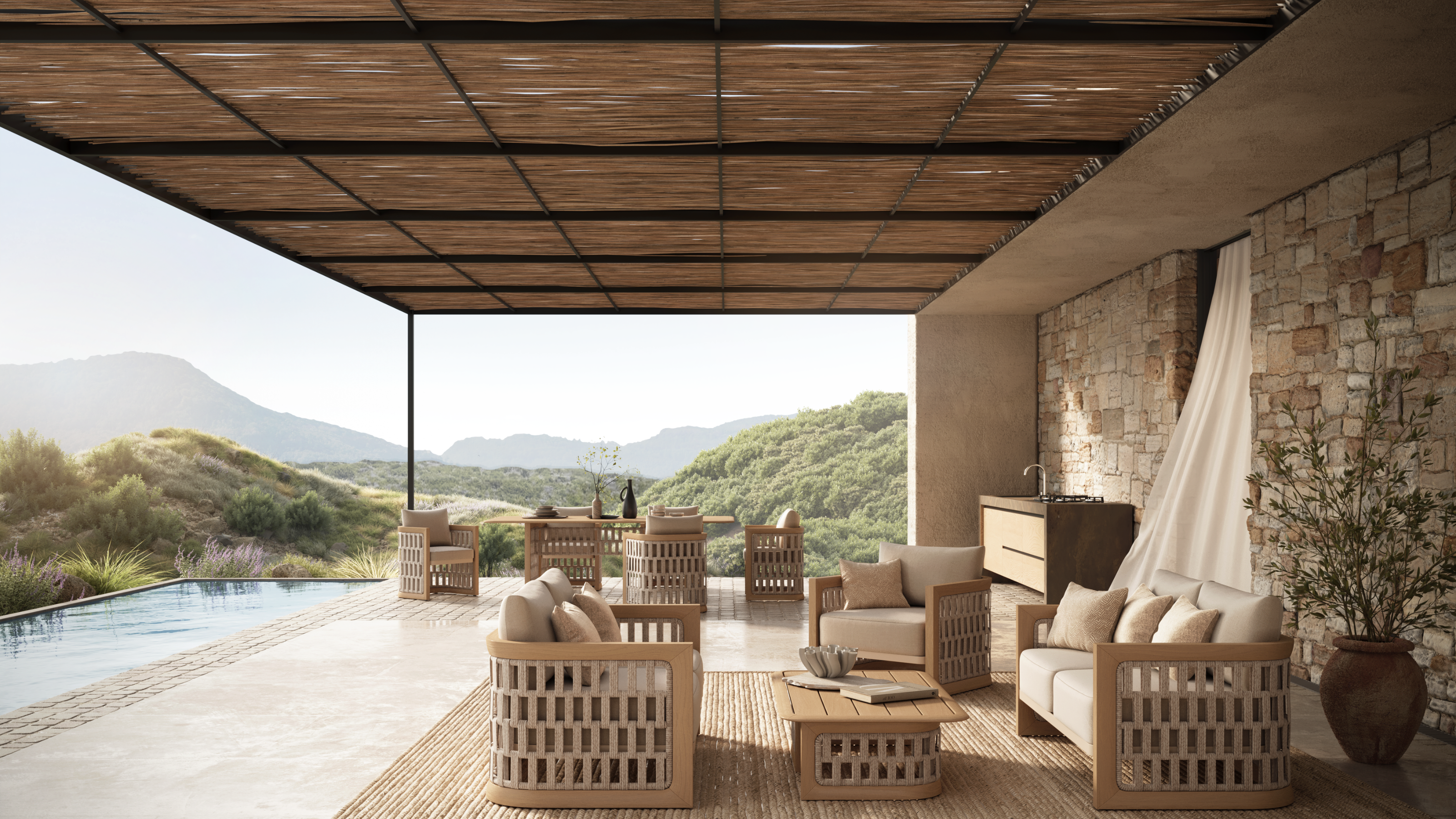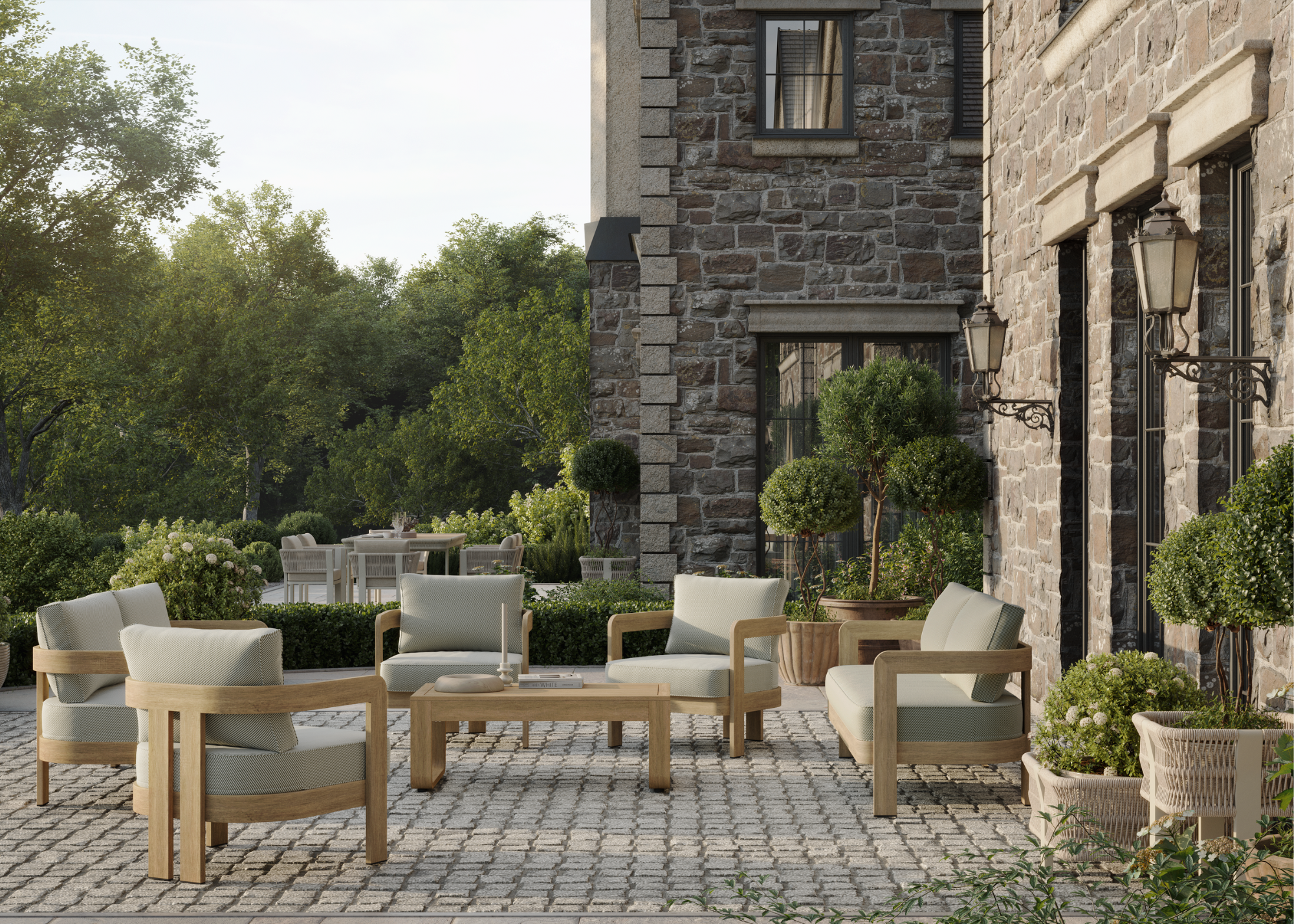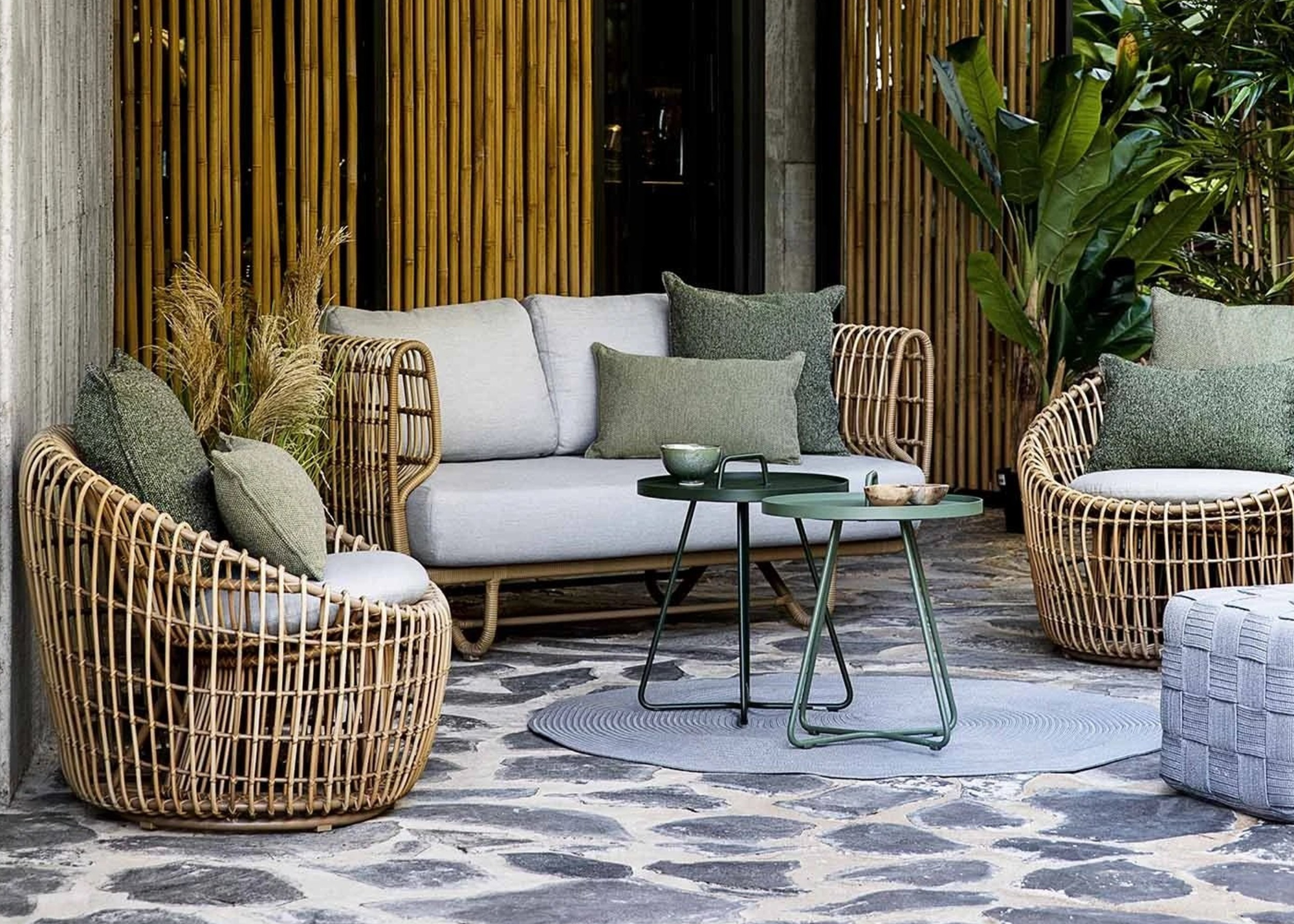
In the world of outdoor furniture, there has long been one clear winner. One material that has consistently come out on top, beloved and celebrated through the years. That material is, of course, teak.
This luxurious hardwood has earned a reputation as 'the king of woods', the best wood for outdoor furniture, favored by many luxury brands and garden experts alike. It is, however, typically accompanied by a steep price tag, often significantly higher than what you'd pay for other, similar woods, like acacia.
This inevitably leads to more questions about the material, about its nature, whether it's worth the high costs, what makes it different from other woods, and several other queries. After all, it's only natural to want to know a bit more before handing over your cash.
Thankfully, our experts were more than happy to share their wisdom about this lauded wood, and we don't want to give anything away, but you may just be tempted to redo your whole back garden setup once you're done reading. Don't say we didn't warn you.
What Is Teak Wood?

Before we dive into the many uses of teak wood and get down to whether or not it's the right material for your garden furniture, let's start with the basics — what is teak, and where does it come from?
Hailing from South and Southeast Asia, this material is sourced from the Tectona grandis tree, most commonly found across India and Thailand. This deciduous tree is known to grow up to 50 metres and live for over 100 years. They are considered one of the fastest-growing hardwood species, growing an impressive half-inch each day.
As a notably close-grained wood species, teak is considerably better equipped for exposure to water and is generally more durable than other, similar types of wood. Not only does its close-grained nature allow for heightened water resistance, but the high concentration of oils and minerals also means teak is unlikely to rot or warp, even after constant exposure to the elements. This is why, throughout history, teak was a favored material for the construction of boats.
Why Is Teak Good for Outdoors?

So, we know that teak has been favored throughout history for its strength and durability, but does this translate into a propensity for outdoor furniture?
"Absolutely," answers Laura Cranston, from luxury outdoor furniture brand, Nth Degree. "Teak is one of the most premium and time-honored choices for outdoor furniture," she continues, "Its naturally high oil content and dense grain make it exceptionally resistant to moisture, rot, and insects — qualities that allow it to withstand the elements beautifully with minimal upkeep."
With teak, you're naturally granted the qualities you'd have to pay to achieve with other, less desirable woods. There's no need to apply additional protective coats and layers to your furniture, as this durable material already has a natural protection against the elements.
Andy Wu, founder of Backyard Oasis, says, "Teak repels water, rot, and even insects looking for their evening snack by virtue of its natural oils, naturally weatherproofed by Mother Nature. That's why teak's been a favorite for centuries, from ships to patio furniture."
While teak is not entirely impervious to the effects of outdoor exposure, unlike other woods, teak ages in a more graceful, attractive manner.
As interior designer Rachel Blindauer explains, "Unlike other woods, it doesn’t warp or splinter easily and gracefully develops a silvery patina over time. I often specify it for clients who want a low-maintenance, high-end look that matures beautifully, even when left uncovered."
This makes teak one of the materials for outdoor furniture that lasts the longest.
The Downfalls of Using Teak Outdoors

As we've established, teak is undoubtedly a strong and durable choice for your outdoor area, but this doesn't mean it's entirely exempt from fault.
"Teak is remarkably resilient, but like any natural material, it can weather and change in appearance over time," explains Laura, "Left untreated, it will gradually shift to a silvery-gray hue, which many consider part of its charm. However, exposure to heavy rainfall, fluctuating temperatures, and prolonged direct sun can cause surface cracks or slight warping if not cared for. These aren’t structural concerns but are part of the natural aging process."
These natural shifts in appearance are only really a downfall if you see them as one. For many, this silver patina is just part of teak's charm, a symbol of a well-loved and well-used item.
As Rachel explains, "The primary 'risk' with teak isn’t performance — it’s expectation. If you’re attached to that rich honey-brown color, know that teak will weather to gray unless regularly oiled. For some, that aging process is part of the charm. For others, it’s a letdown."
If you fall more into the latter camp and are keen to make the original warm tone last, there are some small tricks you can do to stop your outdoor furniture from fading.
"To maintain teak’s original honey-gold finish and reduce surface wear, we recommend regular cleaning with a soft brush and mild soap," suggests Laura, "Applying a teak protector annually can also help preserve the color, though many of our clients love the silvered look it develops over time."
Depending on the climate you live in, you may feel the need to take additional protective measures to prepare your outdoor furniture for winter.
"During harsher months, protective covers are a smart option to minimise cleaning and extend the table’s lifespan, while still embracing the raw beauty of natural materials," Laura continues.
Beyond shifts in tone, the other potential issue lies in surface-level cracks and fractures.
"The plain truth is: teak cracks or splits if you don't take care of it, especially with wacky weather fluctuations, humid heat, aberrant freezes," says Andy.
However, much like the silver patina, this is a purely aesthetic issue, and one that many won't even consider an issue at all.
The Best Teak Alternatives for Outdoor Furniture

For all the benefits of teak furniture, there is one obvious downfall: the price. Teak may be one of our experts' favorites, but it is not a cheap option by any means. So, if you're on more of a budget or just want a different look, there are plenty of other outdoor materials to choose from.
Chloe Burrow, from Laura James, shares, "In my opinion, there are materials that have a similar level of resistance to British weather, like acacia wood and treated rattan, which are much more cost-effective. So, if you’re looking for outdoor style on a budget, I wouldn’t necessarily recommend teak."
When it comes to outdoor furniture, acacia vs teak is a much-discussed debate. Like teak, acacia is an attractive and durable option, with the added appeal of a lower price point.
However, as Rachel explains, "Acacia is often considered a more affordable alternative, but it’s less stable outdoors. It lacks the natural oil content of teak and tends to crack or fade more quickly if not sealed or brought inside. I think of acacia as a great option for covered porches or areas with low exposure, but not for long-term open-air use. Teak is the heirloom piece; acacia is the seasonal stand-in."
But wood is not the only option for your outdoor seating, and modern designs are increasingly reliant on alternative materials, which can offer a sleeker, modern look.
"At Nth Degree, we champion timeless design and enduring quality," says Laura, "Alongside teak, we recommend materials like powder-coated aluminium for its lightweight durability and sleek modern lines, and natural stone such as travertine or marble for tables — both offering a luxurious yet practical outdoor experience."
Rachel is also a fan of the sleek modernity offered by aluminum, saying, "Beyond teak, I often recommend powder-coated aluminum (especially in coastal regions), woven synthetic rattan for lightness and texture, and high-density polyethylene (HDPE) for modern, eco-friendly durability. For upholstered pieces, solution-dyed acrylics like Sunbrella are a must — they resist fading, mold, and spills while offering a luxe indoor look. I always encourage clients to blend textures — wood, metal, fabric — for a layered outdoor living room that feels curated, not catalogued."
Just like inside your home, creating a stylish, layered look outside is all about combining different materials. So while teak can play a key role, this doesn't mean there isn't plenty of space for other textures to shine.
This incredibly chic outdoor lounge chair boasts a warm, medium teak base, complemented by the equally neutral, oyster gray upholstery. With wide armrests and a deep seat, this is the chair the whole family will be fighting over all summer long.
This 8-seater garden table and chairs set is the ideal choice for any frequent host. This elegant setup would instantly elevate any summertime BBQ or even a casual evening drink. Plus, the Olefin fabric used for the chair cushions is quick-drying and resistant to staining, making for an all-around durable design.
If you really want to take your garden setup to the next level, a fully stocked outdoor bar cart is the way to go. And you can't find a more luxe model than this natural teak design. With oversized wheels and plenty of storage space, this drinks trolley is just as practical as it is stylish.
So, if you're looking for an outdoor furniture option that is low-maintenance, durable, and effortlessly beautiful, teak is the way to go. But if you want to explore what acacia wood furniture is, for further comparison, we have a guide on it, too.







